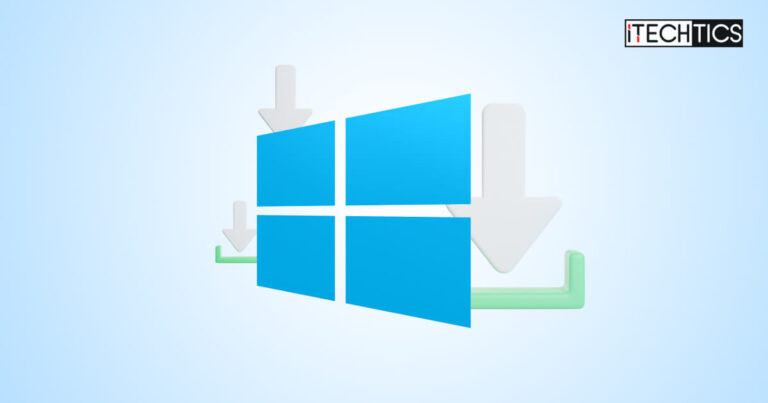If you are using the Windows 10 or Windows 11 operating system and experiencing lag during gameplay, slow browsing speeds, and whatnot; the chances are that something is downloading in the background. A background download could be choking the bandwidth and not allowing enough for a smooth internet experience.
The background download could be a Windows update, some personal download in the browser, or just another movie from a torrent/magnet link.
This article lists all the methods using which you can identify whether or not your computer is downloading something, or consuming internet bandwidth, that may be resulting in a bad internet experience.
Table of Contents
The Windows OS natively provides multiple methods and tools that show how much the different apps and processes are consuming the bandwidth. You can check whether something is downloading using the following tools and methods:
- From the Task Manager
- From the Resource Manager (remon.exe)
- From the Data Usage Settings page
- From the Windows Update Settings page
- Within individual web browsers
If you cannot find what is downloading, we suggest you move on to the next method to check there as well. Go through each method to determine what is downloading so you can pause/cancel it.
Check What is Downloading in the Background from Task Manager
The Task Manager is the go-to applet to check which apps and processes are consuming your system’s resources. This also includes the network bandwidth. Using the Task Manager, you can determine which app or process is taking consuming up the bandwidth, and that will probably be the culprit for background downloads.
-
Open the Task Manager using the CTRL + Shift + Esc shortcut keys.
-
In the Processes tab, click on the “Network” column header to sort the processes in descending order.

Sort processes in descending order with respect to network consumption in Task Manager
The processes will now list in descending order with respect to network usage. The process/app on the top wall be consuming the highest network bandwidth out of all the processes. Therefore, it is likely that the background download is also happening from the app.
At this point, you can end the process by right-clicking it and then clicking “End task” from the context menu, or go to the app and stop the download from there.
Check What is Downloading in the Background from Resource Manager
The Resource Manager is another built-in tool in Windows that shows details on the running tasks and processes and their resource consumption; including the network. Follow these steps to identify any background downloads using the Resource Manager:
-
Open the Resource Manager by typing in “resmon” in the Run Command box.

Open the Resource Monitor -
Switch to the “Network” tab.

Open the Network tab in Resource Monitor -
In the “Processes with Network Activity” section, click on the “Receive (B/sec)” column header to sort the processes in descending order with respect to downloading network consumption.

Sort processes in descending order with respect to network consumption in Resource Monitor This will now show the highest bandwidth-consuming process at the top, and the rest will follow.
You have now identified the culprit for the background downloading. Similar to the Task Manager, you can end the process directly from the Resource Manager, or open the associated app and stop it from there.
Note that we only recommend that you end a process if you know which app it is associated with, or what the process does. Terminating a system-critical process could crash your computer.
Check Which App is Downloading in the Background
You can find out which app is, or has in the past, consumed the most bandwidth of all. This can be done through the Settings app. Here is how:
-
Go to the following:
Settings app >> Network & internet >> Advanced network settings >> Data usage
-
Here, you will find a list of different apps and their data consumption in the last 30 days.
Note: The time for retaining data per app may be different if you have changed the parameters.

Check per-app data usage from Settings
Check for Windows Updates in the Background
The Windows operating system automatically downloads and installs updates in the background. It may be possible that an update is downloading, causing other internet experiences to be slower.
Go to the following path to see whether a Windows update is downloading:
Settings app >> Windows Update

If you find that there is a download in progress, you can choose to pause it. However, we recommend that you let it download and install since Windows updates are important for the operating system to function properly.
Check What is Downloading in the Background in Browser
After having checked everywhere else, the last place to look for background downloads is your web browser. You may have started downloading something from a website and then forgotten about it. If so, the file would still be downloading in the background.
To check for ongoing downloads in any web browser, open it and then press CTRL + J shortcut keys to open the downloads history page.

From the browser, you can pause or cancel a download anytime you want.
Final Thoughts
When multiple apps and processes start consuming the network bandwidth, it is divided among them equally. Moreover, a process with a higher priority may be allowed by the system to perform its task first, causing lag and stuttering during gameplay, and slowing down other internet-related tasks.
It is for this reason that one might want to identify whether a download is currently in place on their computer, and terminate it if need be.





